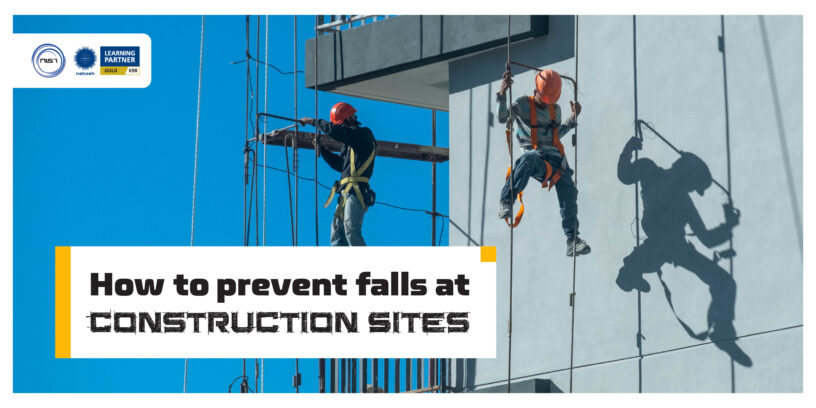High-rise constructions have emerged as important projects of interest in the real estate and construction industries. However, this trend exposes construction workers to hazardous situations on a daily basis. As a result, work-related injuries are widespread, especially when personnel are required to work in highly elevated positions such as scaffoldings and rooftops. While there are many different sorts of accidents that can happen on construction sites, falls are the greatest cause of mortality. Falls on construction sites can be avoided if fall prevention programmes and techniques are proactively strengthened. The obvious and most crucial reason for this is to save lives.
Consider the economic implications of construction injuries in terms of healthcare expenditures, production losses, lost income prospects for families due to disability or fatalities, compensation claims and litigation, and penalties imposed on enterprises for failing to follow safety rules.
Given the expenses listed above, having fall prevention programmes in place and properly administering them can benefit all parties.
6 steps to prevent falls:
Preventing accidents on construction sites can be made easier by identifying the common causes of falls. After all, these are not unavoidable occurrences. Here are some methods for preventing falls on the jobsite.
#1 Regular Risk Assessments
Daily walk-throughs are part of best practices in construction. Potential workplace dangers can be assessed and addressed by safety professionals or other personnel.
There should be an inspection checklist available that describes the state of guardrails, scaffoldings and ladders, and personal fall arrest systems, among other things. Employees should also be responsible for inspecting their fall protection equipment every time they utilize it. These frequent assessments can aid in the identification and mitigation of risks before they cause incidents.
#2 PPE & right equipment that meets safety standards
The obligation for providing fall protection for your employees, particularly those who operate in high-risk areas, is on your shoulders. Personal fall arrest measures, such as good-quality harnesses with correctly placed anchors, are required for roof workers. Harnesses should also be correctly fitted to the weight and build of the workers who will be using them. All additional equipment, including as ladders, scaffolds, and safety gear, should meet safety standards. For stability, ladders and scaffolds should be placed on flat ground. It is also critical to install barriers in risky areas to prevent accidents. Floor openings where workers may fall should be marked with appropriate markings, coverings, or other protective equipment.
#3 Equip qualified workers
Construction workers require specialized skills. While construction managers have project completion timelines, it is not a good idea to assign someone to undertake another person’s job due to absences or a lack of workers. Those who are assigned to work at heights must be capable of doing so.
Accidents may occur if workers execute duties for which they lack knowledge or have insufficient experience.
#4 Construction Safety Training
Workers must be continually informed of construction site safety precautions. These are some of the key aspects you should consider including in your construction safety training programmes:
- The significance of fall prevention.
- How to use and operate fall protection and other safety equipment such as ladders and scaffolds.
- How to spot faulty fall safety equipment.
- Installed ladder safety precautions for personnel who use ladder.
- Techniques such as three-point contact, which involves using three limbs to mount or disembark from a ladder or platform.
- The usage of a buddy system, particularly among roof workers.
- Selected individuals receive first-aid training.
- Putting in place an emergency response mechanism.
Follow-up training programmes should examine workers’ requirements as well as job performance. Workers should also recommend further training programmes to fix flaws that could put them or their coworkers in danger.
#5 Orderly & Clean Site
Cleaning the jobsite should be part of the daily routine, including the removal of debris and dangers that cause falls, slips, and trips. Remove any dirt heaps or anything that are obstructing passages. Instead, store these goods in locations with no hectic workflow, such as an open yard. Floors must be dry and nonslip. Machinery should be serviced on a regular basis to guarantee optimal operation and efficiency.
#6 Encourage Safety Compliance
Determine simple strategies to encourage personnel to follow safety rules. For example, a no-injury month can be recognized and rewarded. Workers will be aware that the company regards their safety in this manner.
Employee safety in the construction business should be a primary focus, as employee productivity can effect project completion. Companies’ goals should be to achieve zero casualties on death & injuries in construction sites—a goal that can only be achieved if effective fall prevention measures are always in place.
Construction Safety Training @ NIST Global
At NIST Global, we offer Construction Safety Training customized as per your requirement. We are India’s one of the top safety organizations offering World-class safety services.
For Construction safety training, kindly call our experts @ +91 8754465588 or mail us @ info@nistglobal.com














Leave a Reply